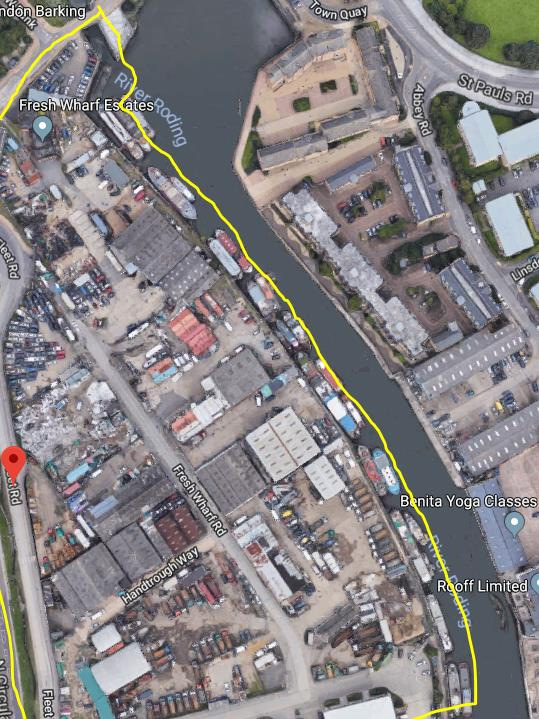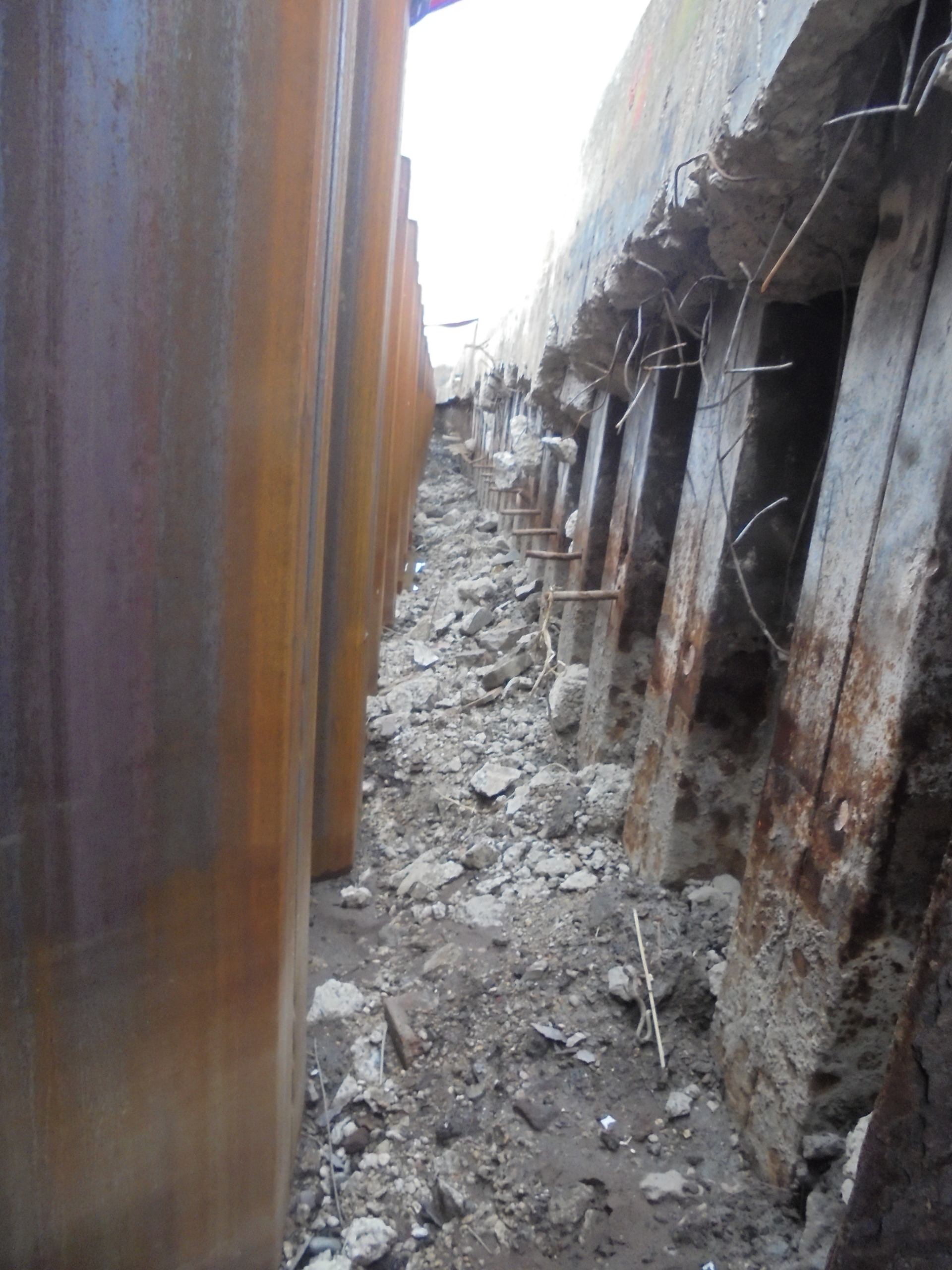The scope of the professional design and engineering services provided by Swanton for the Fresh Water Wharf scheme in Barking has addressed all phases of groundworks, starting with the assessment of the river wall as to release existing ground anchors needed to reduce the general formation level for the new build and continuing with the design of various mooring scenarios for the boats sited on the River Roding which runs cca. 450m along the East of the site. Various working platform designs have also been provided thus ensuring the safety of works during piling or heavy plant lifts.


Aerial view of site before demolition (from Google Maps). River Roding bounding the site to the East and North Circular Rd. to the West
RIVER WALL ASSESSMENT
The engineering support provided has included detailed assessments and analyses of the river wall using Geosolve Wallap software to ensure the wall’s stability in the temporary condition. More importantly, this entailed the release of the ground anchors that have laterally supported the wall throughout its service life. Upon release of the anchor ties, the new sheet piled cofferdam river wall could be constructed to the landscape architect’s specification.
The various sheet pile sections and toe depths of the existing river wall sheet piles, capping beam down stands and general weathering of the wall have added to the complexity and challenging nature of the works in which Swanton’s understanding and experience acquired on similar jobs have played a key role in the success of the new Barking development.
During the construction phase, Swanton have also provided the needed technical expertise to ensure works’ safety and cost-effective delivery. This has included the interpretation of topographical monitoring carried out for the existing river wall, coordination with the client and subcontractors as to comply with site schedule and general programme providing consultancy on works sequencing and approaches befitting approved methodology.
GROUNDWORKS & MOORING PILES
Groundworks specifications and methodology advice have been provided upon technical & risk analysis for the smaller but equally critical items of works, such as services diversion or protection during potentially encroaching works such as trenching for drainage and reduction of ground levels to enable construction of foundations.
As mentioned earlier, design checks and specifications for various working platforms and access ramps have been a substantial part of the support provided by Swanton and even though such designs/assessments are frequent, the value added by Swanton was to merge all separate items into a coherent holistic understanding of the job.
A crucial approach proposed by Swanton and incorporated by the main contractor into their methodology has been to optimize working platform specifications through realistic assessments informed by a plethora of plate bearing tests carried out throughout the site by Swantest.
Another interesting element of the project was the design of temporary mooring piles for boats sited on the river adjacent to the site. The solution provided by Swanton to use steel tubes (Circular Hollows Sections) has been found more appropriate than initial proposals to use universal bearing piles sections.


Existing river wall sheet piling (right hand side) after the release of anchor tie rods as to enable new piling (left hand side)
CONCLUSIONS
The Fresh Wharf project in Barking has been a challenging mix of routine temporary works designs that have required inclusion into works encroaching the existing river wall hence requiring high level technical analysis. Technical and practical expertise in efficient temporary works delivery to live jobs has added to the understanding of the project as a whole.
The structural assessment of the river wall has presented the major engineering/design challenge and has ultimately been overcome by the construction team assisted also by Swanton’s approach to manage design risk and uncertainty informed by up to date and bespoke site tests and surveys all playing into the ethos of close coordination with site teams and other relevant project stakeholders.